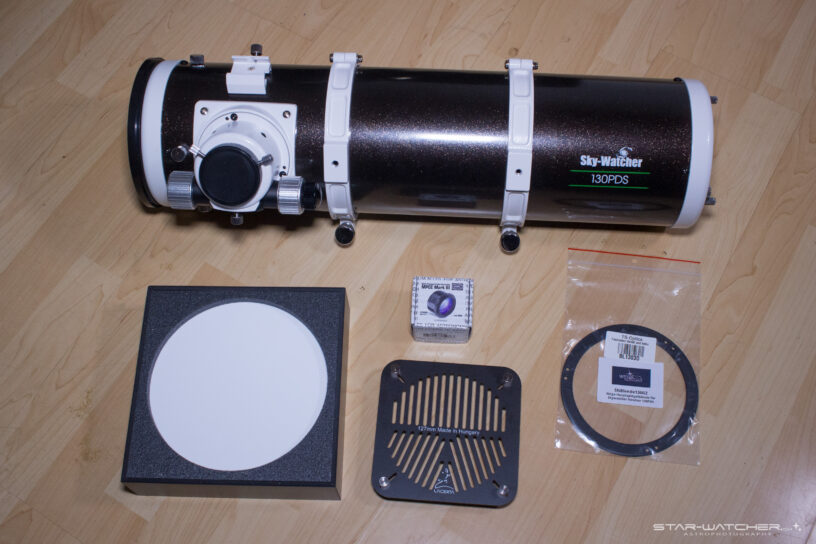
Finally I got my first photographical telescope, the Sky-Watcher Explorer 130PDS (*).
- Focal length: 650mm
- Aperture: 130mm
- Focal ratio: f/5 (33% more light than my 400mm f/5.6)
- Weight: 4kg
- Focuser: 2″ crayford dual speed
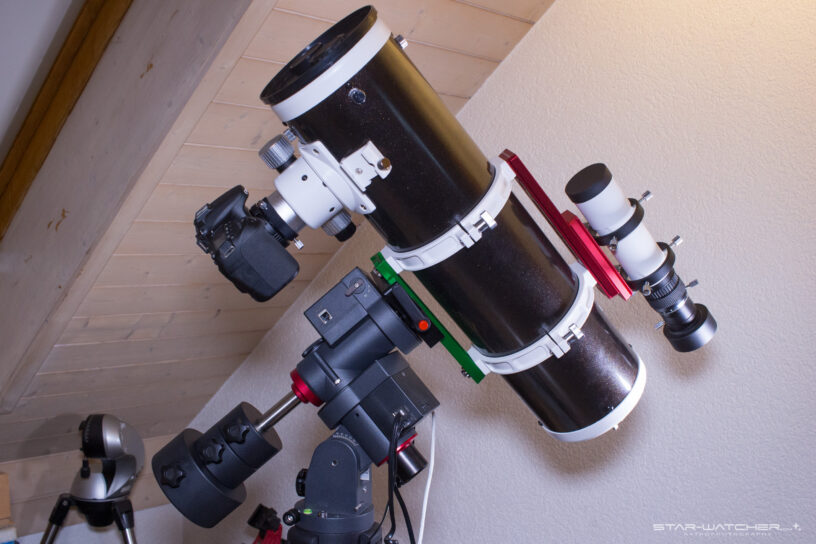
My order contained:
- Sky-Watcher Explorer 130PDS 130/650mm f/5 (*)
- Baader 2″ MPCC Mark III coma corrector (*)
- Wega Primary mirror mask ring
- Lacerta Bahtinov mask (*)
- Lacerta LED Flatfieldbox 185mm
So, I’m ready to start the next chapter 😉
Even if I don’t like diffraction spikes that much and other disadvantages with Newton telescopes (collimation needed, balance challenge due to the side-attached camera, wind sensitive, …) I decided to go with a Newton.
Prices for refractors are raising and raising… This one is a really budget solution at around 700 swiss francs.
Finally more focal lenght 🙂
Weight
The new setup weighs total 6.2kg (130PDS tube, DSLR, corrector and guide scope).
That’s 1.1kg more than my old setup but still below 50% capacity for my GEM28 (12.7kg). Perfect conditions!
At least I hope so…
First Light
M 101 Pinwheel Galaxy
What a luck… A few hours of clear sky, just 3 days after receiving my 130PDS! Best opportunity to test my new telescope under the night sky… 🙂
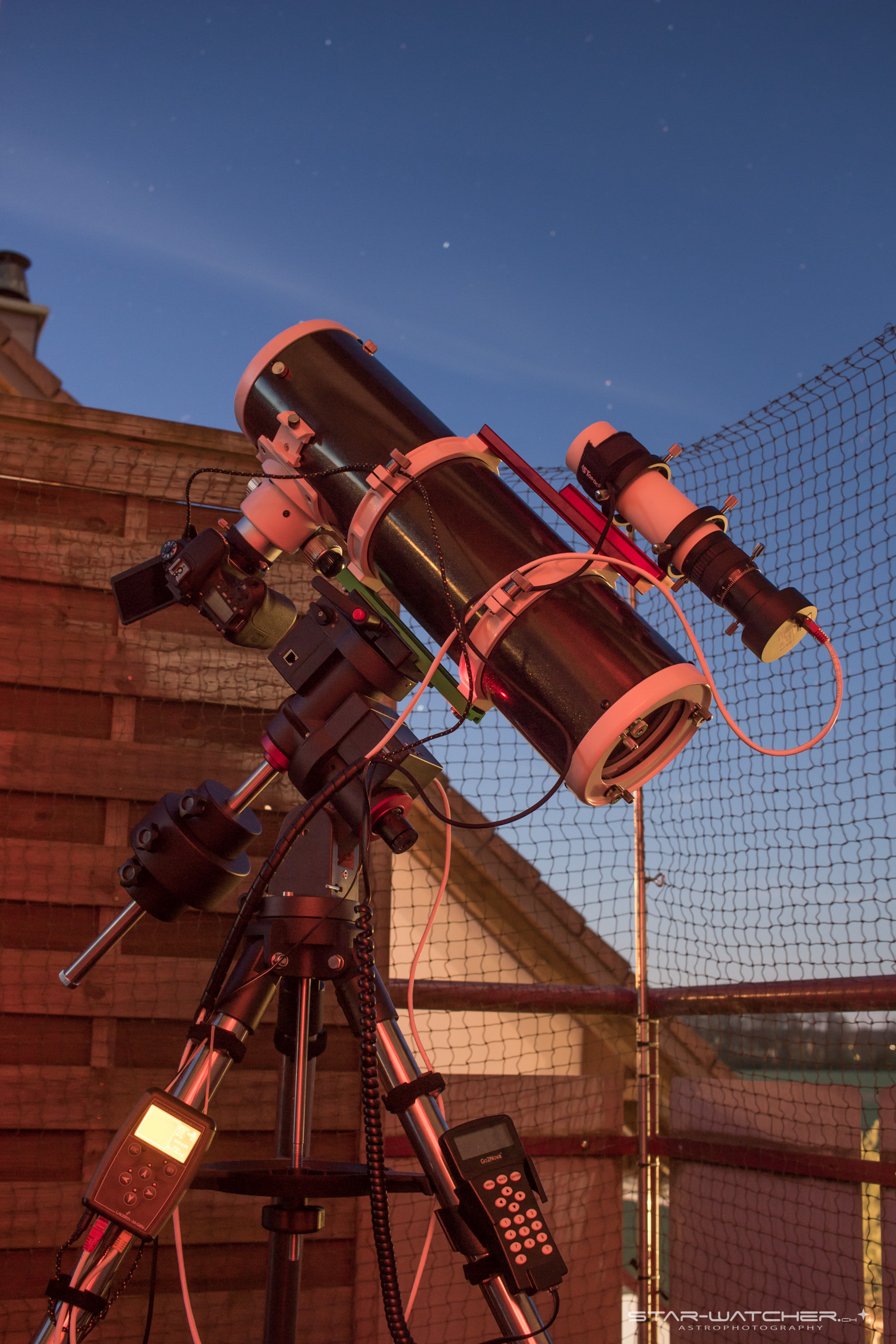
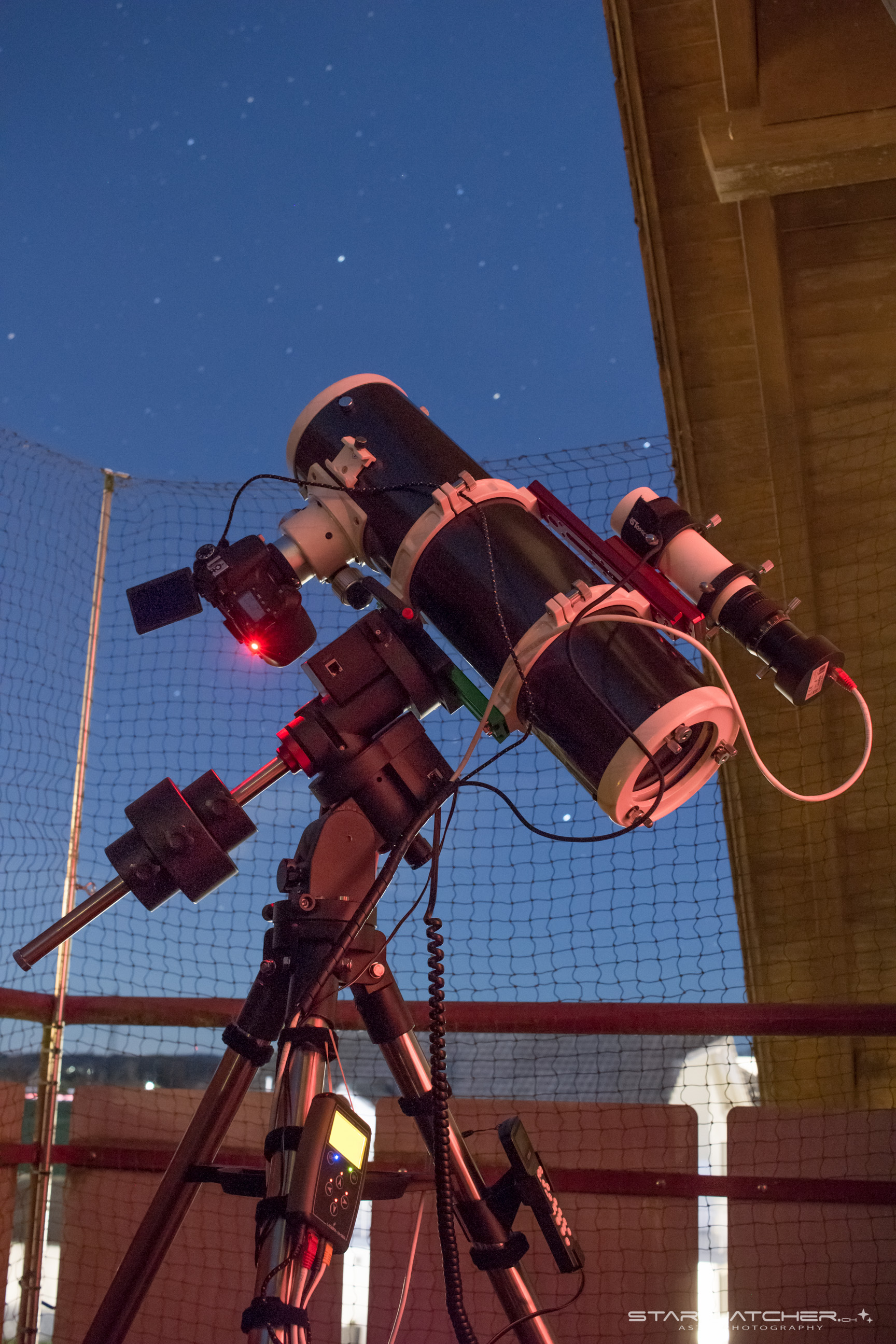
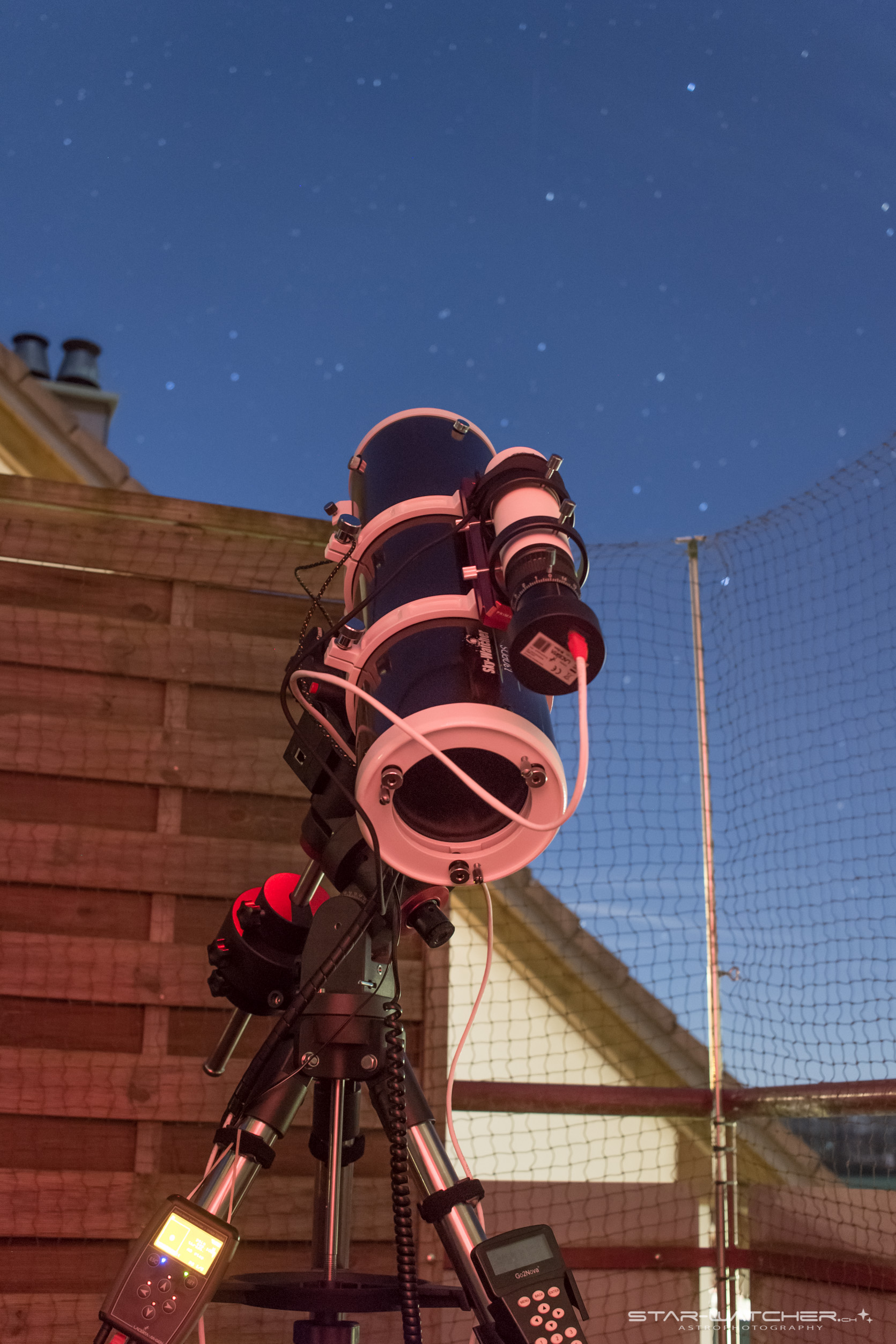
Collimation
Of course I needed to collimate my Newton telescope. I used my laser collimator, which I already bought 2016. Fast and easy collimation, but not really reproducible! The original 2″ adapter in combination with my standard 2″ to 1.25″ adapter makes it really difficult…
Polar Alignment
It turned out that the 70D in focus position partially covers the polar scope. Fortunately if the focuser is fully retracted, the polar scope has free sight. I can’t mount my DSLR in another position in terms of balance.
Star Alignment
To my surprise the star alignment, respectively the GoTo was easy to handle, even at 650mm focal length.
The first alignment star wasn’t visible in the LiveView area, but I know from my 400mm setup where it usually is. So one short push on the left RA button and the star came into the display 🙂 The second star then already was visible directly after slewing to it.
Focusing
As I thought, focussing with the new Lacerta Bahtinov mask (*) was very easy! The reason I chosed this specific model are the finer stripes, compared to other brands. That way the pattern is much better recognizable.
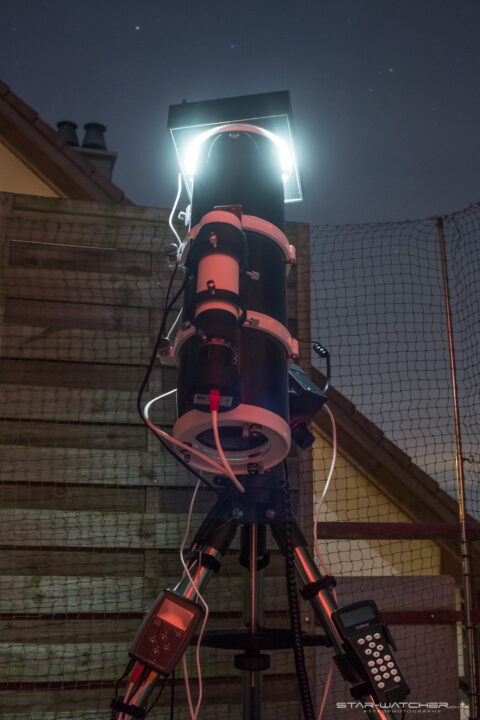
Lights
Again my GEM28 worked like a charm. No freezes or other problems during the whole session 🙂
I needed to re-focus once around 90 minutes after starting the session. For sure the metal tube slightly deforms due to temperature changes much more than my Canon 400mm lens. I guess I’ll need to check the focus more often now.
Flats
My netbook’s display is to small to made flats on the 130PDS, so I needed a new solution.
It’s very easy to take flats with my new dimmable Lacerta LED flatfield box! Much easier than with my netbook, which I must hold all the time while taking flats…
Darks / Bias
For the darks I disattached my 70D from the focuser, covered the corrector with it’s cap and while running the darks I could disassembly the OTA. Really practical.
Since my MGEN, which controls my 70D, is attached to a tripod leg, I left the tripod outside among the DSLR. I placed the DSLR on a little chair next to the tripod.
All in all, a very successful first light 🙂

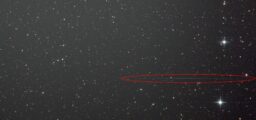
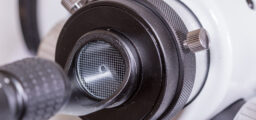
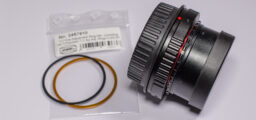
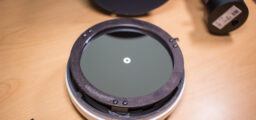

6 comments
Wonderful to read this! I’ve been on your site many times before and it’s actually this site that convinced me to go for a GEM28. I’ve been really pleased with the GEM28 so far (even though I had to adjust it quite a bit before guiding became acceptable).
I was thinking of purchasing a 130 PDS next summer (and this is actually how I came back to this site, after Google’ing), so I’m looking forward to your future adventures with that one. Does the GEM28 handle the 130 PDS with ease? How about windy nights, do you notice any difference in guiding accuracy?
Really appreciate your message 🙂
Do you also encounter freezes on your GEM28 (autoguiding stops work, hand controller no reaction…)? I have to fight with those freezes sometimes, but I’m lucky the last 10 sessions have been freeze-free…
Also my GEM28 had to be adjusted for guiding (worm play, DEC axis stiction). But I’m happy now with the performance.
My GEM28 gets along very well with the 130PDS. A little wind doesn’t seem to be a problem either.
In my (short) experience I would say, 4-5 mph wind speed is the limit.
Surprisingly guiding accuracy is better than with my old setup even if I didn’t changed the guiding settings.
The only thing I’m still struggling is the collimation. It’s really difficult to reproduce a laser collimation due to the 2″ to 1.25″ adapter. Even with a twist lock adapter which should be more precise than the original 2″ to 1.25″ adapter.
But generally the GEM28 and the 130PDS seems to be a very good combination 🙂
Ah, I read in one of your articles that you had a problem with freezes during guiding but I haven’t encountered that so far myself. My setup isn’t as mobile as yours: My whole setup (Off-Axis-Guider, camera, EAF) is connected to a powered USB hub, and that hub is connected via a long cable to a computer which is stored in a shed. The computer is also accessible via a remote connection (via another desktop and via my iPad), so I mainly use it as storage for the sub-exposures that are made, but I do the processing on my Mac that obviously isn’t placed in the shed. Did you upgrade to the latest firmware?
I had the stiction issue when it arrived from the retailer (bought it from Astromarket as the price was good and they have a physical office which is housed in a large planetarium very close to where I live) – I tried adjusting the meshing first but still it wasn’t autoguiding very well. I’m on a 1,44″ Pixel Scale with (for the time being) a planetary camera that I use for DSO imaging and a 420mm F6 budget refractor, so it’s pretty obvious that when the guiding goes off for just a bit it’s also noticeable in the shape of the stars. RA guiding was quite smooth (even with factory settings), but DEC was terrible – I took the whole mount apart, adjusted everything and lubricated the necessary parts with a mineral oil and reassembled it, this gave pretty good results so far. Usually I’m around 0.8″ – 1.0″ RMS with equal values for both RA and DEC in PHD2, it depends a bit on the wind as the place where my mount is placed is between a shed and a greenhouse and this tends to create a wind-tunnel-effect. It also depends a bit on the target I’m shooting: if I have a high signal-to-noise ratio for the guide star then I can use very low shutter speeds (approximately 1 second) and then the guiding is really stellar.
I just noticed the other day that there was some “sidewards worm play” that was causing some minor backlash, I fixed that today. I’m not sure if I had the document from your website, but this is what I used: https://www.teleskop-express.de/shop/Bilder/shop/IOptron/cem26-gem28-worm-play-fix.pdf – this document is a good guide on how to take apart the mount, could be helpful!)
Good to know regarding the 130 PDS! The reason that I want to purchase one is three-fold:
– In my professional life I’m a software test engineer and I have the opportunity to test a new camera from SVBony (budget brand) that uses an IMX294 sensor. That particular sensor in combination with my 420mm refractor offers a “too wide view” to my likings, so I’m looking at something bigger. Refractor prices are going through the roof nowadays so I was looking into a reflector.
– My “apochromatic” refractor is a cheap model, but it still has some chromatic aberration in the blue channel. i could spend a lot of money on a triplet with FPL53 or FPL55 glass, but then again not all of those have nice stars either, so it’s a bit of a guess. Pictures that were made with a 130 PDS that I’ve seen so far all seem fairly good.
– I also enjoy visual astronomy, so that 130PDS would be a big step-up from the 70mm F6 refractor
I’m also a bit afraid of collimating! Thanks for making that feeling even worse. 🙂
If you’d compare the reflector with your refractors: do you see a large difference in the amount of light that they capture over the same period of time?
Control everything from a shed sounds very comfortable to me! Some day I’ll also use a laptop to control everything 🙂 Yes, I upgraded to the latest firmware a few months ago, hoping the freezes would stop…
And fortunately my DEC worm have absolutely no sidewards play, but I know this document.
The raising prices for refractors were also a reason for me to buy the 130PDS…
The 130PDS is said to be a very nice little reflector based on forum articles on the net. And so far I can only agree!
It wasn’t my intention to make you feel any worse about the collimation… 😉
I was hoping that the 2″ adapter with compression ring in combination with a twist lock 2″ to 1.25″ adapter and my new Baader Laser Colli Mark III would make it better… it’s way better that with the old components and my old basic 1.25″ laser collimator, but far away from perfect…
I don’t see a large difference in the amount of light. There is a difference, but not large. I used my 400mm lens always at f/5.6, so the difference to f/5 is not that big.
At least the subs on the DSLR LiveView looks the same as before 😉 But I think in total there will be for sure more light. If I collect 3 hours of light with the 130PDS, it’s like I would collect 4 hours with my 400mm lens (since f/5 to f/5.6 is a one-third stop)
Hi!
Nice blog, I am also having a 130PDS going my way and cannot await it’s arrival 🙂
Can you please explain me how you mounted your guide scope “on the back” of the two tubus rings? That’s what I have in mind for my setup aswell, but cannot work out which stuff I need to get in order to install it that way.
Thanks!
Hi
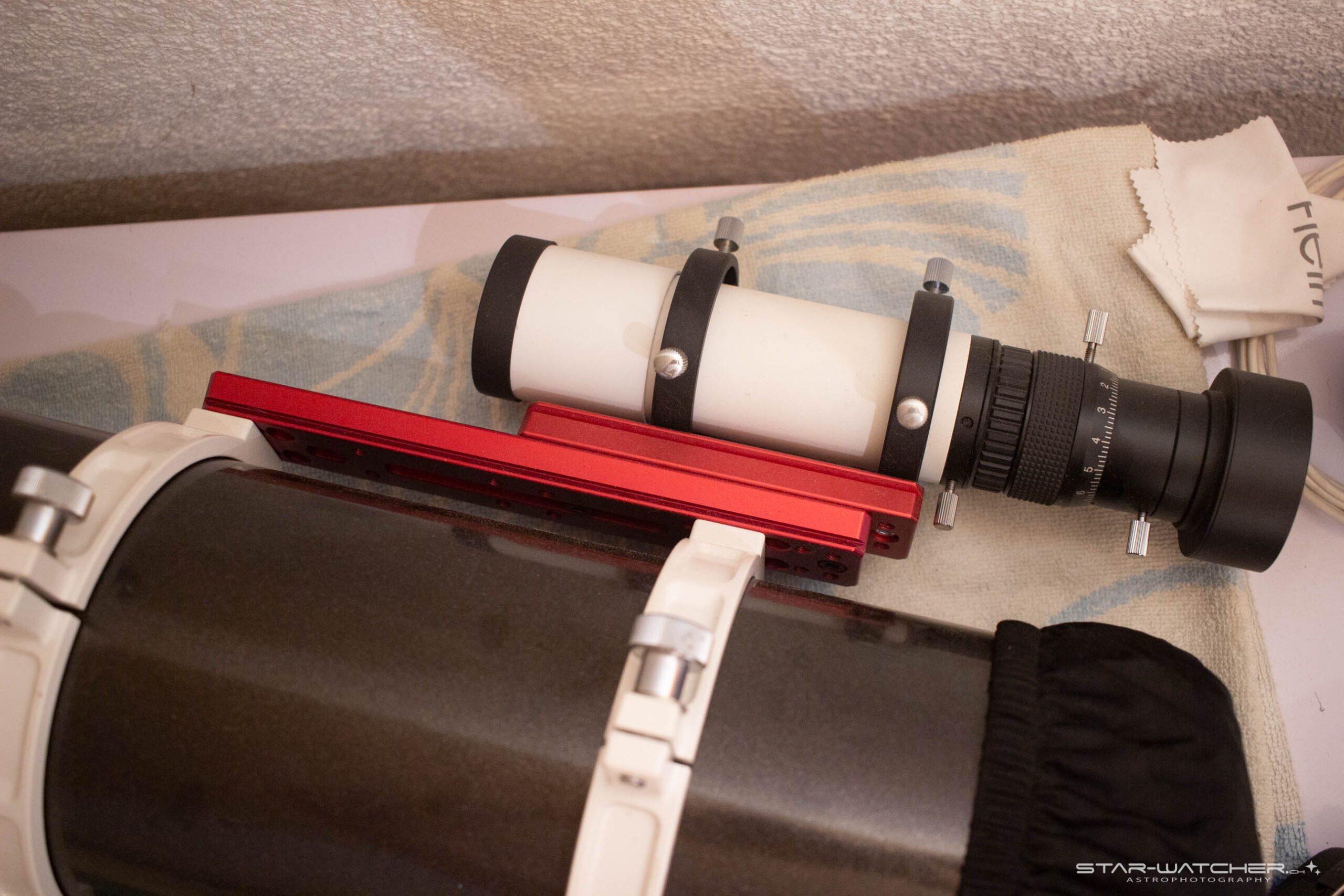
Thank you.
I mounted the guide scope with 2 dove tail bars. It’s a 240mm bar, mounted on the 130PDS. On the 240mm bar I attached a 140mm bar on which the guide scope rings are mounted.
Clear Skies
Karol